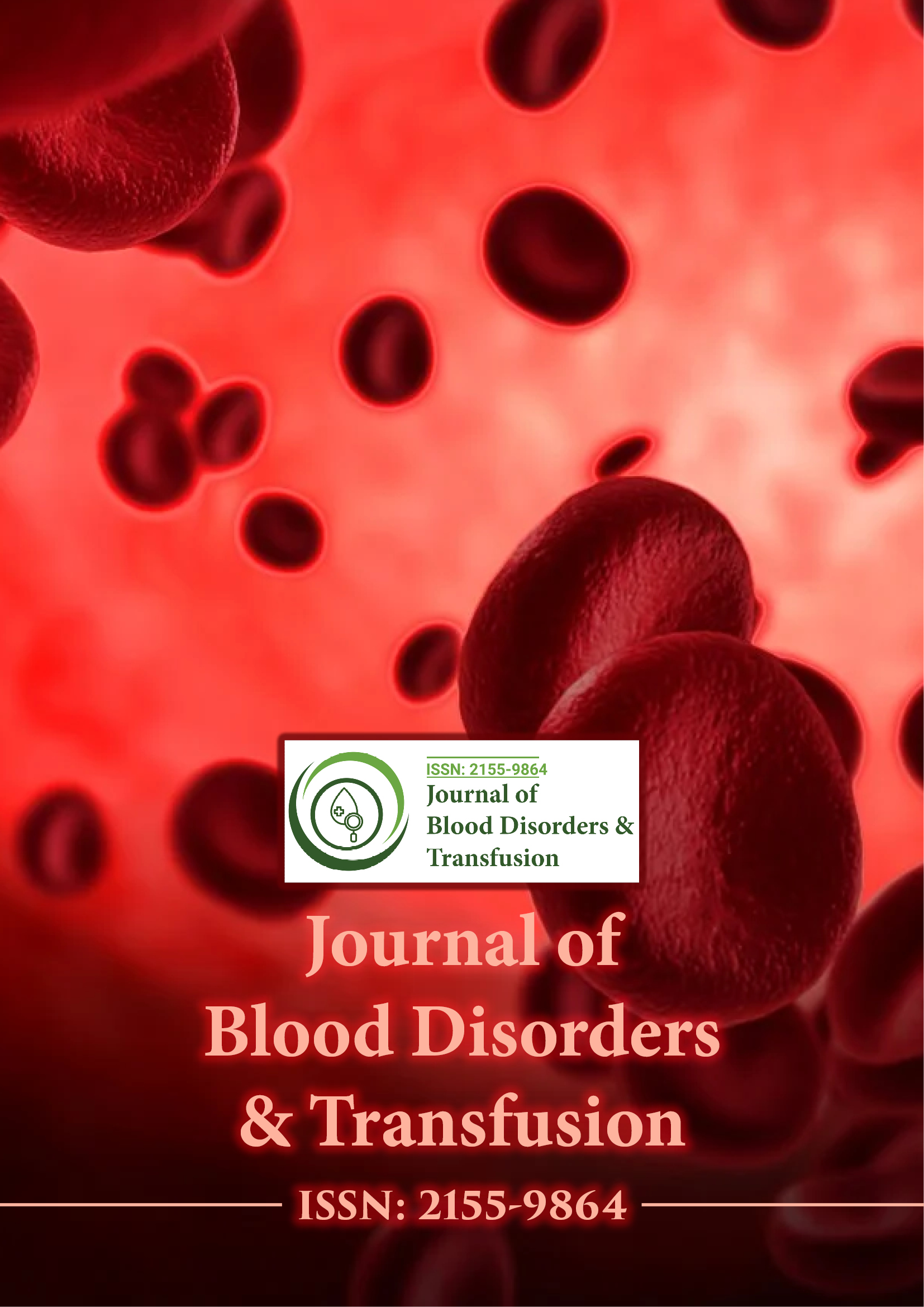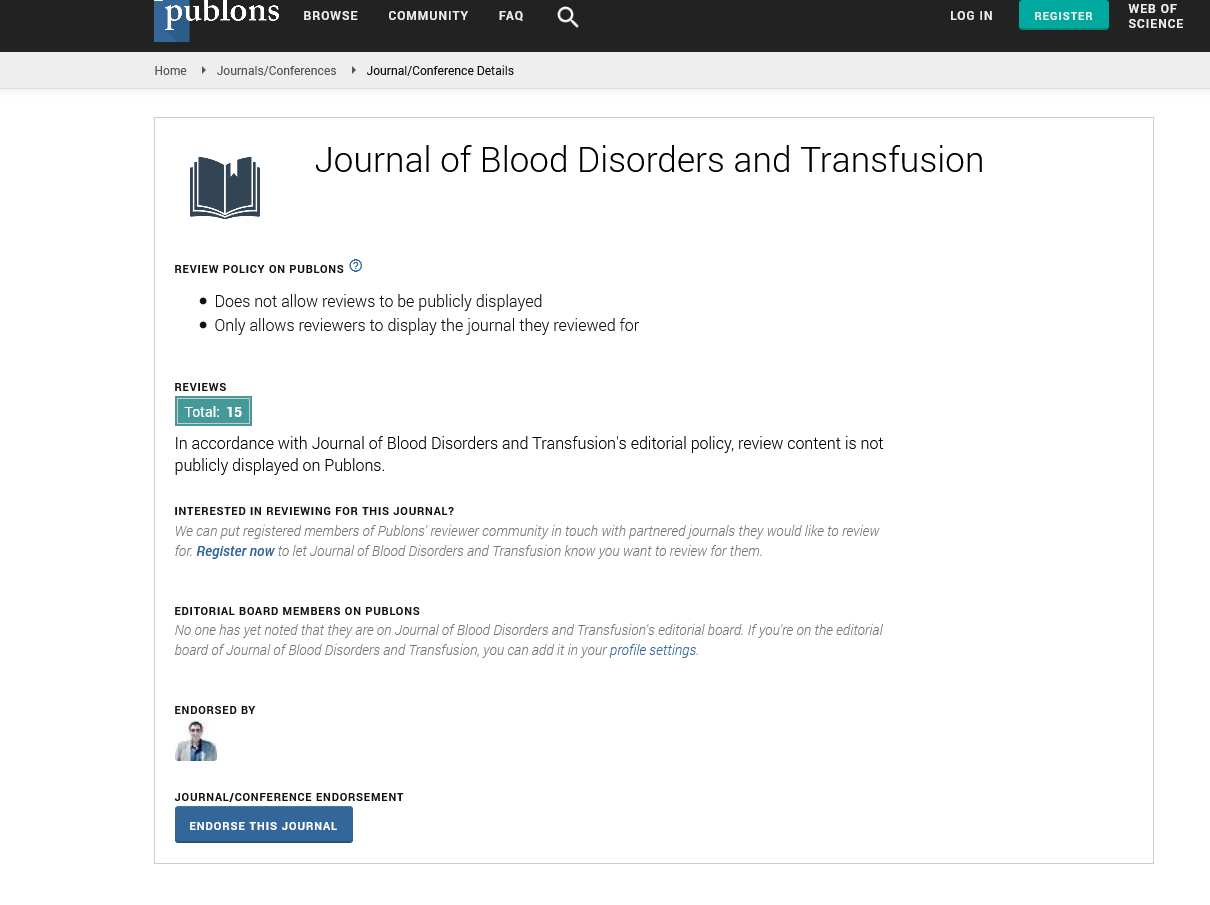Indexed In
- Open J Gate
- Genamics JournalSeek
- JournalTOCs
- Ulrich's Periodicals Directory
- RefSeek
- Hamdard University
- EBSCO A-Z
- OCLC- WorldCat
- Proquest Summons
- Publons
- Geneva Foundation for Medical Education and Research
- Euro Pub
- Google Scholar
Useful Links
Share This Page
Journal Flyer

Open Access Journals
- Agri and Aquaculture
- Biochemistry
- Bioinformatics & Systems Biology
- Business & Management
- Chemistry
- Clinical Sciences
- Engineering
- Food & Nutrition
- General Science
- Genetics & Molecular Biology
- Immunology & Microbiology
- Medical Sciences
- Neuroscience & Psychology
- Nursing & Health Care
- Pharmaceutical Sciences
Prevalence of high titre alpha and beta haemolysins among blood donors in Sokoto, North Western Nigeria
2nd International Conference on Hematology & Blood Disorders
September 29-October 01, 2014 DoubleTree by Hilton Baltimore-BWI Airport, USA
Emmanuel Kufre Uko, Erhabor O, Ahmed HM2, Isaac IZ, Abdulrahaman Y, Wase A, Ezimah A, Aghedo F, Ikuenbor DB, Udomah FP, Iweke IP and Adias TC
Scientific Tracks Abstracts: J Blood Disorders Transf
Abstract:
Background: Allogenic blood has never been more in demand than it is today particularly in developing countries. One of the biggest challenges to blood safety particularly in developing countries is accessing safe and adequate quantities of blood and blood products. One strategy geared towards the optimum utilization of scare donor units is use of blood and blood products against ABO blood group barrier. The aim of this study was to determine the prevalence of alpha- and beta-haemolysins among blood group A, B and O donors in Sokoto, North Western, Nigeria. Methods: This prospective case study was carried out at the Service Laboratory of the Faculty of Medical Laboratory Science in UsmanuDanfodiyo University Sokoto, North-Western Nigeria. Sera from 140 blood donors were screened for alpha- (anti-A) and beta- (anti-B) haemolysins using the standard tube technique at 37 C for 1 hour. Titre of ≥1:64 was regarded as positive for high titre haemolysin. Results: One hundred and forty blood male donors aged 18-50 years and mean age 30?8.4 years were screened for alpha- (anti-A) and beta- (anti-B) haemolysins. Study population included 60 blood group O donors (42.9%), 40 blood group- A (26.7%) and 40 blood group B (26.7%) donors. Out of the 140 blood donors screened, 14 (10.0%) were positive for high titre haemolysin (titre≥64) while 126 (90%) were negative (titre<64). The prevalence of haemolysin was compared based on blood group of donors. The prevalence of high titre haemolysin was significantly higher among blood group O donors (18.3%) compared to 5% and 2.5% respectively for group B and group A donors respectively (p=0.001). Out of the 14 donor positive for haemolysin, 7 (50%) were positive for Alpha haemolysin, 4 (28.5%) for beta while 3(21.4%) had both alpha and beta haemolysin. There were no age-dependent differences in the prevalence of high titer haemolysins among the blood donor tested. Conclusion: This study has shown that the prevalence of high titre alpha and beta haemolysin is high particularly among blood group O donors in Sokoto, Nigeria. We recommend that all group O, A and B blood donors whose blood is intended for transfusion against ABO blood group barrier be screened routinely for high titre alpha and beta haemolysins and that all blood group O red cell units intended for use as universal donor units must be screened and found negative for high titre alpha and beta haemolysins. Also all Fresh Frozen Plasma (FFP) and platelet concentrate intended for use against ABO blood group barrier should be tested and found negative for high titre anti-A and B haemolysin.

